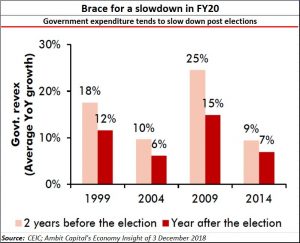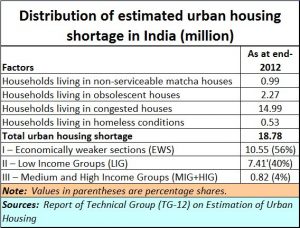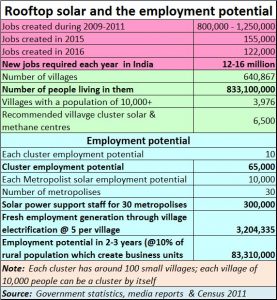https://www.firstpost.com/business/india-2019-govt-should-propel-growth-in-infra-renewable-energy-sector-to-ease-unemployment-pain-5803401.html/amp?__twitter_impression=true
India 2019: what the future beckons for the country
RN Bhaskar — Dec 28, 2018
It is ironic that one should be wishing each other a Happy New Year, when most economists are agreed that 2019 could be a very turbulent year. Just last week, Ajit Ranade, noted economist, went on record stating, “A global slowdown might be inevitable.”
Part of the reason could be the US. As Ranade points out, the trade wars triggered by that country has made markets nervous. In February, there was a huge selloff and sharply increased volatility. The Morgan Stanley Capital Index (MSCI) dropped by US$ 3 trillion dollars.
That caused currencies to take a big hit. Argentina, Turkey, Indonesia and South Africa (even India) currencies were badly affected.
Bright and the dark sides
But India still may not be so badly hurt because of two reasons.
The price of oil, unexpectedly, has started to slip. That gives India some breathing space.
Moreover, as Ranade rightly states, the monthly inflow of domestic investors into the stock market, thanks to schemes like monthly Systematic Investment Plans (SIPs) are now close to a healthy Rs 10,000 crore. They can now offset the sudden exit of foreign money.
But there are some nasty clouds that India will have to reckon with in the coming year.
First, the desperate need to create jobs. India has failed miserably on this front.
Second, the urgent need to bring in foreign direct investments (FDI). Without it, fresh investments in infrastructure might not take place. Already some of the bids for roadways had to be recast, and offered for rebidding, because there weren’t any takers. Without such investments, job formation will continue to remain grim.
Many countries have slowed down their fresh FDI into India because of the government’s refusal to give a clear response on dispute redressal. It does not want investors to take recourse4 to arbitration outside India (because the Supreme Court has already decreed that awards by arbitration tribunals from seats outside India cannot be reopened by Indian courts – http://www.asiaconverge.com/2016/08/arbitration-awards-india-shaken/). But it is equally unwilling to give the same guarantee for the Indian arbitration centres. This is bad because the government itself is the biggest litigant in courts.
 Third, expect government spending to slow down in the months following the elections. This has been the pattern for most general elections (see chart). Governments splurge money before the elections to woo an electorate. After elections, spending slows down. Except, this time, the expenditure slowdown will occur even as the global economy will slow down.
Third, expect government spending to slow down in the months following the elections. This has been the pattern for most general elections (see chart). Governments splurge money before the elections to woo an electorate. After elections, spending slows down. Except, this time, the expenditure slowdown will occur even as the global economy will slow down.
With little FDI, and the possibility of exports slowing down because of trade wars, India could face exceedingly painful times.
Unless. . . . .
Solution #1 – India should learn from Iran
There is a key lesson that India could learn from Iran (http://www.asiaconverge.com/2015/03/762affordable-housing-what-india-can-learn-from-iran/). When Iran was in trouble, with little job formation, US sanctions, and little education, it needed to ensure that it could create jobs. One of its strategies was to build affordable houses – minimum area 800 square feet). After all, cement, land and steel were available domestically.. Labour was homegrown. This activity needed little foreign exchange. India should do the same thing.
But to make it succeed, two things must happen. First, zero tolerance for any slums. That will make potential slum dwellers purchase houses rather than angling for free politically-backed housing on usurped land.
 Second, the government must build at least 2 million houses (or more) each year. The demand exceeds 20 million homes (see chart). These figures were compiled in 2012. They should have increased by 25% at least since then.
Second, the government must build at least 2 million houses (or more) each year. The demand exceeds 20 million homes (see chart). These figures were compiled in 2012. They should have increased by 25% at least since then.
If you build just merely 50,000 houses, you will get a black market. That is what happen when demand outstrips supply. That is bad for the country, bad for values, bad for people. Large numbers will create jobs; will create hopes for countless millions in India. The demand for housing will create jobs; that will create purchasing power; that will create more investments and more jobs. The virtuous cycle could get kick-started.
India can escape the paucity of foreign capital. It can create jobs for those not well skilled. The new roads built by the ministry of Nitin Gadkari will make commutes easier.
Solution #2 – there’s nothing like the sun
As this author has pointed out earlier, India is blessed with lots of people and lots of sunshine. The government should make use of that. To understand its potential, one should look at Germany (http://www.asiaconverge.com/2017/10/solar-power-couldtrigger-employment-generation/).
When the late Hermann Scheer, then energy minister of Germany, introduced rooftop solar in his country, he knew that most people would not bother to put up solar panels even though they were environmentally friendly. So he offered them the opportunity of letting the state put it up. Moreover, people could use the solar power generated free of cost. Whatever power was not used, they could sell it to an agency which would pay them for it. Thus the house owner would get some free electricity, and also payment for the electricity he did not use. The plan worked, and many houses opted for rooftop solar.
To make this work, Scheer created a layer of people who would install the solar, maintain it, set up bidirectional meters that would measure the amount of electricity sold to the agency. The agency, which was part of the layer that Scheer created, would clean the intermittent power from solar rooftops, aggregate it from hundreds of houses, and then sell it to the national grid for a price. The government subsidised the price.
 Today, if solar prices have fallen, it is because of the market Germany created and showed the world how to create it. The Chinese saw a business opportunity and built capacities to meet this soaring demand. Together, they ensured that the price of solar panels fell from $3.50 per peak Watt in 2006 to under 30 cents currently (and the price keeps falling).
Today, if solar prices have fallen, it is because of the market Germany created and showed the world how to create it. The Chinese saw a business opportunity and built capacities to meet this soaring demand. Together, they ensured that the price of solar panels fell from $3.50 per peak Watt in 2006 to under 30 cents currently (and the price keeps falling).
But what Scheer had not reckoned with, and what he discovered was that in eight years’ time the middle layer employed more and more people – installers, cleaners, engineers, and more. By 2008, this middle layer accounted for more jobs than the legendary German auto industry.
This is a big lesson for India. India has more sunlight than Germany, and many more people – hence many more houses and rooftops. What India should be focussing on is creation of middle layers in the form of decentralised cluster power generation and distribution centres. If huts don’t have a good roof, just use a pole and put a solar panel atop it. But it must be done by the private sector, which will ensure that assets don’t get misused or stolen.
Our reckoning is that this could create over 80 million jobs within two years (see table). But to make this work, power to villages must go through he decentralised cluster mode run by private entrepreneurs. Each entrepreneur, in order to boost power consumption would encourage rural folk to consume more power for business or lifestyle or both. That would create jobs, boost economic activity in rural areas, and generate wealth.
It would also reduce India’s fuel import bills. It would provide electricity to the remotest village, and it would prevent energy theft that state grids are notorious for.
Other solutions
There are other things that the government could do. Promote tourism – but that also means reducing bureaucracy, sharp practices by agents .. . Better hotels and toilets, and promoting a sense of security.
India could harness its methane potential, that could almost entirely eliminate India’s fuel import bill (http://www.asiaconverge.com/2018/04/shit-can-mean-big-money/).
India needs to declicence education, and focus only on the quality of output, instead of licensing schools and medical colleges. If India does not provide for good education, the country’s future is blighted.
It needs to focus on healthcare. Ayushman Bharat is only the first step. It will be painful for the middle class, as resources get diverted to the economically poor. But expanding effectively and reasonably priced medicare is crucially important. Remember, India’s score on the World Bank’s Human Capital Index is terrible (http://www.asiaconverge.com/2018/10/poor-hci-rankings-and-a-soaring-stockmarket/).
India could focus on encouraging investments from China which has shown a huge investment appetite in India – disregardful of the arbitration imbroglio or other irritants. India should carefully structure deals so that both countries benefit.
The centre of gravity for economic activity is shifting to Russia, China and India. If harnessed well, these trends could help India ride the tide.
Maybe, it will be wonderful New Year. But will the government (whichever one it might be) be willing to embrace this vision?










































COMMENTS